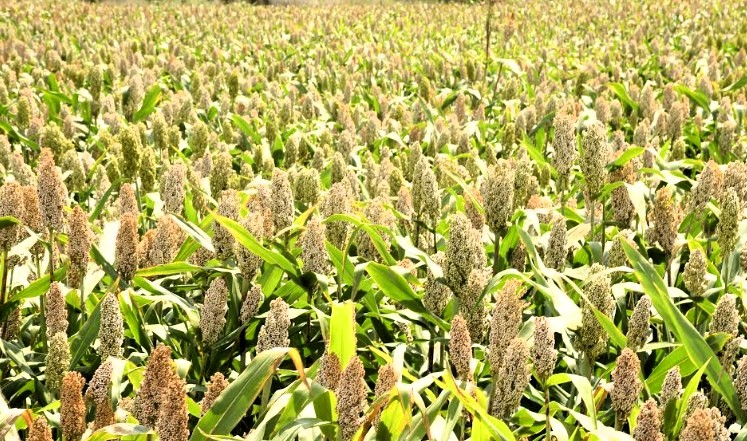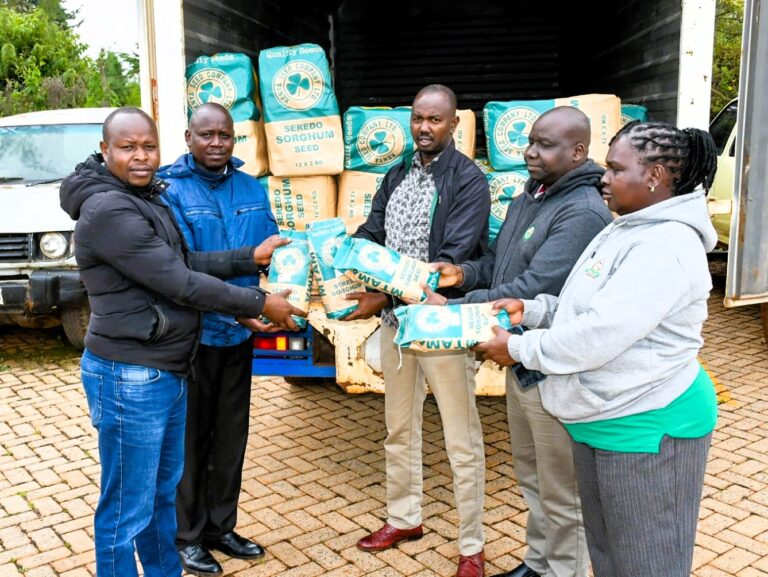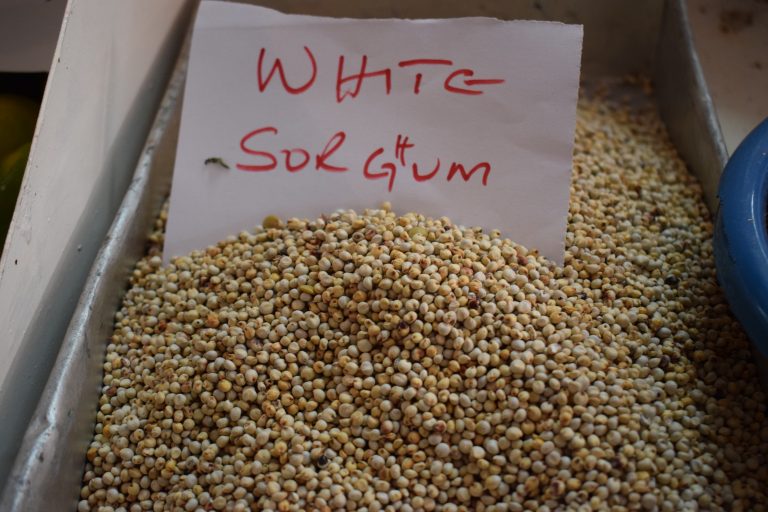Just two years ago, the Kerio Valley was synonymous with insecurity, cattle rustling, and displacement. Today, the region is undergoing a dramatic transformation, with lush fields of sorghum and maize replacing the scars of conflict.
The shift has been made possible by peace, irrigation, and structured agribusiness, bringing renewed hope and prosperity to local communities.
For decades, fertile soils in the valley remained underutilised as families fled persistent clashes. With relative calm restored, farmers, supported by the Kerio Valley Development Authority (KVDA) and the County Government of Elgeyo Marakwet, are trading raids and firearms for hoes and farm tools.
At the Kamsiwet Irrigation Scheme in Marakwet West, farming has resumed on a 150-hectare farm that had been idle for years. Established in 1988 through a partnership between the Italian and Kenyan governments, the scheme had nearly collapsed due to insecurity. It is now producing tonnes of sorghum for local consumption and commercial markets.
“This land lay idle for years because of a lack of peace, but we farmers decided to revive it,” said Paul Cherop, Chairman of the Kamsiwet Cooperative Investment Scheme. “With KVDA’s support in water projects, we have had bountiful harvests. Last year alone, we sold sorghum worth over Sh13 million. For the first time, our children are in school without the worry of fees, and no household here lacks food.”
Cherop urged the government to expand irrigation to neighbouring Baringo and West Pokot counties, linking food security directly to peace. “Cattle rustling begins with hunger. If we deal with that, all will be sorted,” he said.
For women, the scheme has become a source of empowerment. Jennifer Kibet, who relocated from Lagam, said farming has given her family stability.
“My children are now in secondary school and university because of the income I earn here. I live in peace with my husband; we can afford health insurance, and we no longer live from hand to mouth. Farming has restored our dignity,” she said.
Jennifer believes that additional investment in KVDA could attract more women and young people to farming. “If young men and women embrace farming, they will not have time to engage in crime or take what others have worked hard for,” she added.

The scheme has also attracted youth who previously overlooked agriculture. Kelvin Kiplimo, a commerce student at the University of Eldoret, runs a maize shelling business at Kamsiwet.
“From the sheller, I earn about Sh6,000 daily. Half goes into fuel and maintenance, while the rest pays my school fees and upkeep,” he said. “The scheme has changed my life, but we need more shellers to reduce post-harvest losses. The government should support youth groups with equipment to scale agribusiness.”
Schools in the area are also benefiting, with improved nutrition and reduced absenteeism.
“As a teacher and farmer, I have seen how the farm has improved both education and nutrition,” said Evans Chelang’a, a secondary school teacher. “The farm provides food for children, and teachers can also supplement their income through farming. Security has improved too, because people are busy on their farms.”
KVDA Managing Director Sammy Naporos confirmed the impact of the revival.
“Kamsiwet alone has over 350 beneficiaries. This season, farmers harvested 350 tonnes of sorghum worth about Sh25 million. In two seasons, nearly Sh50 million has been injected into the local economy,” he said.
He added that government investment of Sh17 million in water infrastructure had facilitated contract farming agreements with Kenya Breweries and Kenya Seed Company.
“Through farming, people can pay school fees, access healthcare, and register for insurance. This is the real meaning of socio-economic development,” Naporos said, noting that Kamsiwet now supports 1,000 households.
KVDA is replicating the success in other areas. At the Chepkum Irrigation Scheme, 300 acres are under cultivation following rehabilitation of water systems. Farmers there are harvesting about 300 tonnes of maize worth Sh12 million per season, supporting 1,800 households.
To reduce losses, KVDA has built a modern cereal store to replace temporary tents. “Now, with the store, produce is safe and collection is easier,” said Naporos.
The authority is also upgrading the Tot Mango Factory into a fully automated plant, which is expected to increase income for mango farmers once complete.
KVDA Chairman Mark Chesergon said the authority is focusing on long-term sustainability. “We are prioritising water utilisation for agricultural benefits. Today, we commissioned the Barosombat borehole and inspected Chepkum and Kamsiwet irrigation schemes. These projects are about securing food and livelihoods for the next 100 years,” he said.
Elgeyo Marakwet CECM for Agriculture Edwin Kibor highlighted the county’s role in boosting productivity. “Our wealth creation programme is bearing fruit. Farmers here are supplying sorghum to EABL and seeds to KALRO. This is not just about now, but about future food security,” he said.
Local leaders say the region is on a new path. Justin Mutwol, MCA for Arror Ward, recalled the turbulent past: “This farm used to be a battlefield. Today, it is an economic hub. We thank KVDA and the government for reviving the schemes and giving people a reason to choose farming over conflict.”
Across Kamsiwet, neat rows of sorghum shimmer under the Kerio sun as farmers reap the benefits of peace. Where gunfire once echoed, the sounds of shellers and tractors now dominate the valley, a sign of a region rebuilding its future through agriculture.






